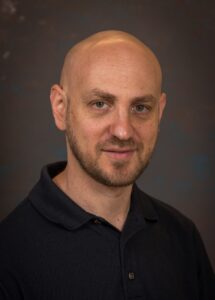Joshua Zide
- General Information
- Symposia
- Atomic Layer Deposition
- Biomaterials and Polymers
- Characterization and Metrology
- Luminescence Phenomena: Materials and Applications
- Microelectronics and MEMS
- Multifunctional and Magnetic Materials
- Nanostructures
- Plasma and Vacuum
- Renewable Energy: Materials and Devices
- Semiconductors
- Tribology, Surfaces and Interfaces
- Theory and Simulation of Materials
- Thin Films
- Science Outreach
- General Program
- Plenary Lectures
- Short Courses
- Technical Talk
- Congress Registration
- Second Athletic Race Registration
- Posters
- Abstract Submission 2024
- Commitees
- Fees
- Hotel Accomodation
- Awards/Grants
- Sponsors and Exhibit
- Book of Abstracts

Joshua Zide
Professor
Materials Science and Engineering Department
Affiliation: Materials Science and Engineering
University of Delaware
zide@udel.edu
Affiliations: Joshua M. O. Zide is a Professor and Chair in the Materials Science and Engineering Department at the University of Delaware. He also serves as an Associate Editor for the Journal of Vacuum Science and Technology, director of UD’s Materials Growth Facility, and as a member of the leadership team for UD’s Center for Hybrid, Responsive, and Active Materials (UD-CHARM).
Education and Research: He received his BS with Distinction in Materials Science and Engineering from Stanford University and completed his Ph.D. in Materials at the University of California, Santa Barbara in 2007. Zide has received the International Thermoelectric Society Goldsmid Award (2007), a Young Investigator Award from the Office of Naval Research (2009), the North American Molecular Beam Epitaxy Young Investigator (2011), a Department of Energy Early Career Award (2012), and the AVS Peter Mark Memorial Award (2014) and was named a Fellow of AVS in 2021. He is an author on approximately 100 publications and several patents.
Epitaxial Growth of Semiconductors and Semiconductor Nanocomposites for (Opto)electronics
Advances in electronic materials (specifically, semiconductors and nanocomposites) enable new device technologies and improve the properties of existing technologies. In this talk, I will present efforts within my group on the growth of new materials by molecular beam epitaxy and the potential advances in technologies such as terahertz sources and detectors, photodetectors and lasers, and quantum dots for quantum information science applications.
Specifically, I will discuss variations on III-V semiconductors including (1) nanocomposites consisting of metallic nanoparticles (such as ErAs and TbAs) epitaxially embedded within III-V semiconductor matrices (e.g. InGaAs/GaAs), (2) dilute bismuthide semiconductors in which bismuth is incorporated into III-V materials, and (3) opportunities based on InAs quantum dots (QD) within III-V heterostructures. In these materials, electronic, thermal, and optical properties can be quite different from those of conventional materials, with significant promise for applications in a variety of (opto)electronic devices.
